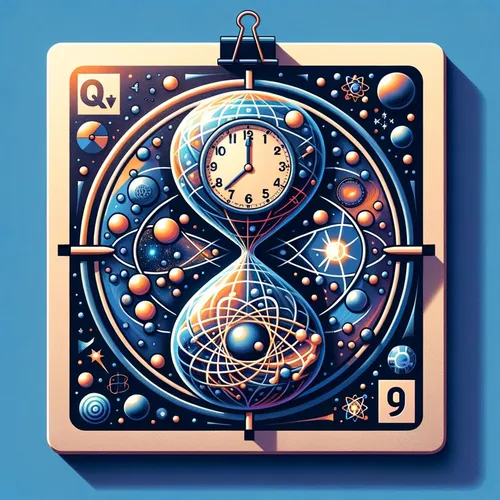Quantum Leaps: PennyLane Tutorials Bring Hands-On Learning to the Masses
- Author
- Quiet. Please
- Published
- Fri 29 Aug 2025
- Episode Link
- https://www.spreaker.com/episode/quantum-leaps-pennylane-tutorials-bring-hands-on-learning-to-the-masses--67554029
This is your Quantum Basics Weekly podcast.
I’m Leo, your Learning Enhanced Operator, and today, the quantum world feels more vivid than ever. Moments ago, as I walked into my lab, my inbox pinged with news of the latest quantum computing educational resource—the NITheCS Mini-school’s “Hands-On Introduction to Quantum Computing with PennyLane” by Abbas Hassasfar out of Stellenbosch University. Released today as part of the International Year of Quantum Science and Technology, this three-part series brings the power of quantum experimentation into the hands of newcomers and veterans alike. I devoured the code notebooks on GitHub, tracing lines through the simulated circuits, each a pulse of insight into quantum superposition and entanglement, concepts that can feel as slippery as morning fog until you see them come alive with your own commands.
Here on Quantum Basics Weekly, I’m not just recounting technical milestones—I’m living them. The PennyLane framework lets users sketch, test, and manipulate real quantum circuits. You build gates—apply a rotation around the Z axis, set an angle to pi, watch your qubit transform—witnessing quantum strangeness directly. In one exercise, teleportation is not science fiction, it’s an algorithm: quantum states leap across simulated chips, defying classical intuition and giving a taste of the quantum future.
This week has been a whirlwind for our field. At IEEE Quantum Week, industry luminaries like Microsoft and Quantinuum revealed how reliable logical qubits are finally entering the mainstream. Quantinuum and NVIDIA announced fresh collaborations to scale hybrid quantum-classical supercomputers. It’s a convergence: new learning resources arrive just as fault-tolerant architectures push the field forward, and workshops from Atlanta to Berlin are abuzz with practical mastery. The buzzword is accessibility—real code, tactile simulations, and open-source communities are making quantum literacy possible for students, entrepreneurs, and dreamers across the globe.
What fascinates me most is seeing quantum parallels in current events. UC Riverside’s research, published just days ago, shows how connecting small quantum chips—imperfect as they are—still creates scalable, fault-tolerant systems. Think of each chip as a musician in a jazz ensemble; alone, each plays beautifully, but together—even with a missed note here and there—the symphony grows richer and more resilient. The NITheCS Mini-school’s PennyLane tutorials mirror this idea, guiding learners to orchestrate multiple qubits, experiment with quantum gates, and even simulate noise, preparing us for the noisy, beautiful complexity of real quantum processors.
These breakthroughs don’t just move the needle—they redefine what’s possible. As quantum computing grows from theory to touchable reality, educational tools like today’s “Hands-On Introduction to Quantum Computing with PennyLane” are vital. They turn daunting abstractions into narrative, code, and connection.
Thank you for joining me. If you have questions or topics you want discussed on air, send an email to [email protected]. Don’t forget to subscribe to Quantum Basics Weekly. This has been a Quiet Please Production. For more information, check out quietplease.ai.
For more http://www.quietplease.ai
Get the best deals https://amzn.to/3ODvOta
